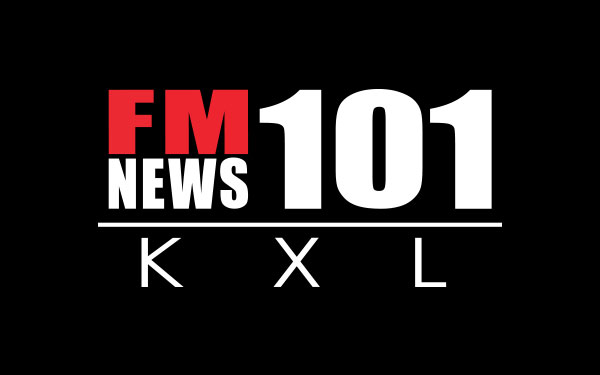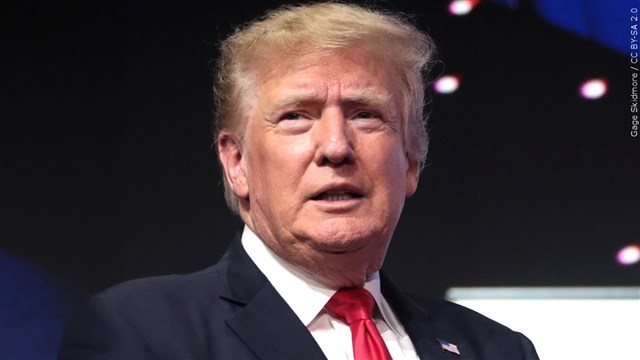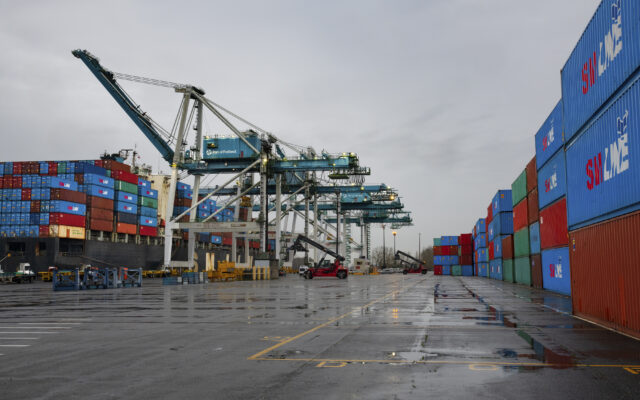State of the Union fact check: What President Donald Trump is claiming

Win McNamee/Getty Images(WASHINGTON) — President Donald Trump is delivering his second State of the Union address to Congress and the country after a record-setting, 35-day partial government shutdown.
This will be his first time addressing the divided Congress, which now features a Democratic-controlled House and the Republican-controlled Senate.
Our team of journalists from ABC News is investigating some of his statements, looking for additional context, detail and information.
Here is ABC News’ fact check of the address:
Fact check No. 1 — The U.S. is the number one producer of oil and natural gas
President Donald Trump: “We have unleashed a revolution in American Energy — the United States is now the number one producer of oil and natural gas in the world. And now, for the first time in 65 years, we are a net exporter of energy.”
Rating: LACKING CONTEXT
Context: The United States is the world’s biggest producer of crude oil, producing close to 12 million barrels of crude oil per day (11.9 to be exact), according to the Energy Information Administration. Russia produced roughly 11.2 million barrels per day in December according to their Ministry of Energy, while Saudi Arabia produces 10.5 million barrels per day.
Patrick DeHaan, Head of Petroleum Analysis at GasBuddy points out that the process of sending in rigs and drilling test wells is a process that is measured in years. For several years now, new drilling techniques including shale production have been boosting production. A move under President Obama also provided a boost to production when in late 2015 Congress lifted the ban on exporting crude oil. That incentivized more production in the United States for sale overseas.
The EIA projects that, for the first time since the 1950s, the United States will export more energy than it imports by 2020, as increases in crude oil, natural gas, and natural gas plant liquids production outpace growth in U.S. energy consumption.
Fact check No. 2 — Tax cuts
Trump: “We passed a massive tax cut for working families and doubled the child tax credit.”
Rating: LACKING CONTEXT
Context: The GOP tax plan reduces taxes on average for all income groups initially, including middle-class Americans.
The average household will see a tax cut of $1,610 in 2019 according to the Tax Policy Center, a nonpartisan think tank. Overall, most Americans — eight in 10, according to the center — will pay lower taxes this year.
But multiple independent analyses concluded that wealthier Americans and corporations will receive the largest benefit over the long term.
“In general, higher-income households receive larger average tax cuts as a percentage of after-tax income,” the center found. “On average, in 2027 taxes would change little for lower- and middle-income groups and decrease for higher-income groups.” Most of the individual income tax provisions will expire after 2025, unless Congress acts. The corporate tax rate cuts are permanent.
Fact check No. 3 — Prescription drug prices
Trump: “Americans pay vastly more than people in other countries for the exact same drugs, often made in the exact same place.”
Rating: TRUE
Context: Last fall, the government released a study that found Medicare — the federally run health care program for seniors — paid more than other industrialized countries for physician-administered drugs. While the precise amount varied by product, the study found that prices charged by those manufacturers are 1.8 times higher in the U.S. than in other countries.
Trump has proposed that Medicare only agree to pay costs based on cheaper prices paid by other nations. It’s one of several proposals he’s made in recent months in a bid to drive down costs, although that proposal wouldn’t take place for another year or so.
The drug industry had criticized the approach, contending that the money paid goes toward ground breaking research that benefits Americans first. According to one industry group, Americans have access to cancer medicines on average two years earlier than in countries like the United Kingdom, Germany and France. Industry executives also say it’s not fair to compare what the U.S. pays for drugs compared to people in countries with socialized health care systems.
Fact check No. 4 — Americans are murdered by “illegal aliens”
Trump: “Year after year, countless Americans are murdered by criminal illegal aliens.”
Rating: LACKING CONTEXT
Context: According to U.S. Immigration and Customs Enforcement data, over the past two years, there were nearly 4,000 arrests made for people both convicted of — and simply charged with — homicide among immigrants released into ICE custody for deportation — but the homicides could’ve been committed over any number of years.
More generally, the president’s speech referenced 266,000 arrests of undocumented immigrants with criminal records over the past two years, a number that mainly includes immigrants who were convicted of crimes in the past, and perhaps served jail time before they were released into ICE custody.
Fact check No. 5 — Drug price decline
Trump: “As a result of my administration’s efforts, in 2018 drug prices experienced their single largest decline in 46 years.”
Rating: MOSTLY SPIN
Context: According to the Consumer Price Index, that dip is .62 percent, looking at data collected on Dec. 2017 to data from Dec. 2018. Last fall, an Associated Press analysis examined the list prices for some 26,000 brand-name drugs and found 96 price hikes for every one price cut.
What Trump can point to in favor of consumers is an aggressive push by the U.S. Food and Drug Administration during his administration to approve generic drugs. White House advisers in an Oct. 2018 report estimated that the recent approval of generic drugs has resulted in $26 billion in savings for consumers that would have otherwise had to choose brand name drugs. Among those approved under Trump was the first generic version of EpiPen, the lifesaving auto injector used to treat emergency reactions. EpiPen injectors went from costing $100 in 2009 to $600 in 2016.
And while out-of-pocket spending for prescription drugs remained mostly flat in 2017 — Trump’s first year in office — out-of-pocket physician and hospital costs increased.
Many of Trump’s ideas to drive down drug costs haven’t taken effect yet and are still winding their way through the rulemaking process. One proposal would upend the usual system of drug rebates when people buy prescription drugs through Medicare or Medicaid. The plan would prohibit drug makers from offering discounts or rebates to “pharmacy benefit managers” that administer drug plans. Instead, the manufacturers would be encouraged to provide rebates directly to consumers. Democrats pushed back, insisting they think the plan will raise costs for consumers.
Another proposal, announced last fall, is to limit what it pays for certain drugs for Medicare recipients by tying the price for some drugs to prices paid overseas. The measure, which would be phased in over several years, would only apply to certain types of drugs via Medicare that are administered by a physician. The drug industry fought back and said the administration was discouraging innovation.
Fact check No. 6 — Limiting legal immigration
Trump: “I want people to come into our country in the largest numbers ever, but they have to come in legally.”
Rating: FALSE
Context: Last fall Trump set the lowest cap in the history of the refugee admission program — permitting just 30,000 a year. In former President Barack Obama’s last year in office he proposed a cap of 110,000 amid the height of the crisis in Syria. In fiscal year 2017, the Trump administration allowed the second fewest refugees ever.
Trump also won a battle in the Supreme Court to restrict all forms of travel and immigration from seven countries, five of which have Muslim majority populations. Just last week, the administration began selectively enforcing a new policy at the southern border that requires migrants seeking asylum to wait in Mexico while their applications are processed. He has also called for the elimination of the diversity visa program, which typically awards up to 50,000 immigration visas each year.
Fact check No. 7 — New jobs and manufacturing
Trump: “We have created 5.3 million new jobs and importantly added 600,000 new manufacturing jobs.”
Rating: LACKING CONTEXT
Context: Nearly 4.9 million jobs have been created since Feb. 2017, including 454,000 manufacturing jobs. The unemployment rate at 4 percent is at levels last seen in late 1999 and 2000. The uptick in the unemployment rate in the most recent jobs report was likely because of the government shutdown. The unemployment rate in Nov. 2018 was 3.7 percent which was a level last seen in 1969, according to the Bureau of Labor Statistics.
African American unemployment is at historic lows at 6.8 percent — but it has ticked up in recent months after hitting an all-time low of 6 percent toward the end of last year. Similarly, the Hispanic unemployment rate at 4.9 percent has ticked up from recent lows of 4.4 percent toward the end of last year.
Fact check No. 8 — North Korea
Trump: “Our hostages have come home, nuclear testing has stopped, and there has not been a missile launch in 15 months. If I had not been elected president of the United States, we would right now, in my opinion, be in a major war with North Korea. Much work remains to be done, but my relationship with Kim Jong Un is a good one.”
Rating: LACKING CONTEXT
Context: It is debatable whether Trump’s election has helped avoid a U.S.-North Korea war. No other president has aggressively pursued diplomacy with North Korea’s leader, but then again, since the end of the Korean War, no other president has so openly threatened the regime.
The president is right that North Korea returned three hostages in May 2018 and swiftly expelled an American who illegally crossed the border into the country in November. The regime has also not conducted a nuclear test since Sept. 2017 and has not test-fired a ballistic missile since Nov. 2017, reducing the threat to U.S. troops and allies in the region.
But North Korea did conduct a weapons test in Nov. 2018, according to the country’s state media, although it did not involve firing a missile. The regime has also said its nuclear capability is complete and no longer requires testing. And satellite images have shown that North Korea has upgraded or expanded some ballistic missile facilities.
Even more importantly, the country has not taken any concrete steps to dismantle its nuclear weapons program, something several other Trump administration officials have admitted, including Vice President Mike Pence and Special Representative for North Korea Stephen Biegun. While the North Koreans say they have dismantled nuclear and missile engine test sites, they have not allowed outside inspectors in to verify those claims.
The U.S. intelligence community continues to assess that the regime still sees nuclear weapons as essential for their survival and does not plan to eliminate them, with Director of National Intelligence Dan Coats saying last week, “North Korea will seek to retain its WMD capabilities and is unlikely to completely give up its nuclear weapons and production capability because its leaders ultimately view nuclear weapons as critical to regime survival.”
While he praised his relationship with Kim Tuesday night, Trump was more ambivalent in a tweet last week, writing, “Decent chance of Denuclearization… Time will tell what will happen with North Korea.” Administration officials say either way, what Trump has achieved is historic in that North Korea’s leader himself has agreed to “denuclearization.”
But what that term means, how it is achieved and when remain a mystery that the U.S. hopes to begin solving at the second Trump-Kim summit, which Trump announced will be Feb. 27-28 in Vietnam.
Fact check No. 9 — Cost of war
Trump: “Our brave troops have now been fighting in the Middle East for almost 19 years. In Afghanistan and Iraq, nearly 7,000 American heroes have given their lives. More than 52,000 Americans have been badly wounded. We have spent more than $7 trillion dollars in the Middle East. As a candidate for president, I pledged a new approach. Great nations do not fight endless wars.”
Rating: LACKING CONTEXT
Context: A Boston University study released in Nov. 2018 estimated the U.S. has so far spent $5.9 trillion on wars and military action in Afghanistan, Pakistan, Iraq and Syria since 9/11, including war-related spending by the State Department, past and obligated spending for veterans’ care, interests on the debt incurred to pay for the wars and costs by the Department of Homeland Security to prevent and respond to terrorism.
Another study, published in 2016, calculated that the U.S. had already spent or obligated $4.6 trillion on the wars in Afghanistan, Iraq, Pakistan and Syria, on Homeland Security, and for veterans’ care through 2053. That study, by Boston University, calculated an additional $3 trillion in interest to reach $7.9 trillion, but that money has not yet been spent, as Trump claimed.
The most recent Congressional Budget Office study estimated in 2014 that the cost of the wars in Iraq and Afghanistan cost $1.6 trillion from 2001 to 2014. But several studies say the largest parts of the U.S. bill have yet to be paid, including for veterans care, replacing military hardware and interest on the debts incurred.
Fact check No. 10 — Drug deaths
Trump: “Tens of thousands of innocent Americans are killed by lethal drugs that cross our border and flood into our cities — including meth, heroin, cocaine and fentanyl.”
Rating: TRUE
Context: Law enforcement officials say this number is expected to increase. As a general matter, the Mexican cartels control almost all the heroin trafficking in the United States. Mexican drug trafficking organizations dominate the market for distribution and production.
According to the 2018 Drug Enforcement Administration National Drug Threat Assessment, “The majority of the flow [of heroin] is through POVs (privately owned vehicles) entering the United States at legal ports of entry, followed by tractor-trailers, where the heroin is co-mingled with legal goods.”
Other ways of getting drugs in the country from Mexico are by water, by air and through other borders, but those methods account for only a small percentage of the heroin seized by the U.S.
The rapid increase in the number of drug deaths in recent years is largely attributable to fentanyl. But the fentanyl is mostly coming through the points of entry at the southwest border and it’s not just coming into the country there — China is a significant source of fentanyl as well.
This is a developing story. Please check back for updates.
Copyright © 2019, ABC Radio. All rights reserved.



